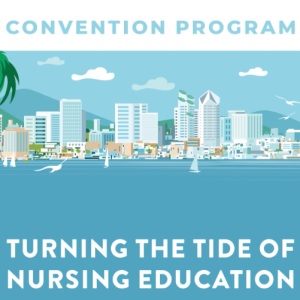Back
1006 - Enhancing Clinical Judgment in Nursing Education: A mass casualty simulation for interprofessional learning
Saturday, November 18, 2023
9:00 AM – 9:50 AM PDT
Location: Hillcrest CD
Earn: 1 CEU

Jennifer Celms, MSN, RN, CEN, CPHQ (she/her/hers)
Assistant Professor
Bellevue College
Katrina Atiya Malkin, BSN, MAT, MHD, RN (she/her/hers)
Nursing Faculty/Simulation Specialist
Bellevue College
Nursing faculty created a live, mass casualty disaster simulation utilizing special effects, trained actors, collaboration with theater students, allied health departments, and clinical partners. The goals were to foster clinical judgment under pressure and develop triage, transport, and rapid care skills in a real-world simulated environment. Learning outcomes were evaluated through pre-and post-simulation assessments and student feedback. Results indicate the simulation was effective in enhancing clinical judgment, effective team dynamics, and promoting student growth as clinicians. This presentation highlights the step-wise approach to creating and implementing a disaster simulation and its impact on student and faculty learning.
Nursing faculty identified gaps in nursing curricula related to interprofessional collaboration, disaster preparedness, climate related health disparities, and med-surgical trauma management. To bridge these gaps, we implemented an innovative initiative - a live, mass casualty natural disaster simulation on campus. This immersive, interdisciplinary simulation aimed to foster clinical judgment skills by engaging students in real-world scenarios from the point of injury to triage to inside the emergency department. Our team incorporated cinematic special effects, realistic makeup, and costumes to create a life-like environment for students to critically assess and manage complex dynamic situations on the fly. Moreover, this simulation promoted interprofessional collaboration among students from different healthcare disciplines, encouraging effective communication and coordination in a team-based approach. Through this presentation, we aim to share the outcomes of this initiative and inspire other nursing educators to explore similar approaches that prioritize clinical judgment and prepare students for the challenges of modern healthcare practice both in and outside the hospital setting.
Nursing faculty identified gaps in nursing curricula related to interprofessional collaboration, disaster preparedness, climate related health disparities, and med-surgical trauma management. To bridge these gaps, we implemented an innovative initiative - a live, mass casualty natural disaster simulation on campus. This immersive, interdisciplinary simulation aimed to foster clinical judgment skills by engaging students in real-world scenarios from the point of injury to triage to inside the emergency department. Our team incorporated cinematic special effects, realistic makeup, and costumes to create a life-like environment for students to critically assess and manage complex dynamic situations on the fly. Moreover, this simulation promoted interprofessional collaboration among students from different healthcare disciplines, encouraging effective communication and coordination in a team-based approach. Through this presentation, we aim to share the outcomes of this initiative and inspire other nursing educators to explore similar approaches that prioritize clinical judgment and prepare students for the challenges of modern healthcare practice both in and outside the hospital setting.
Objectives:
- Gain insights into incorporating special effects, simulated patients, and inter-departmental and community collaboration for effective mass casualty incident simulations.
- Acquire knowledge of assessment methods, including pre-and post-simulation evaluations and feedback, to measure learning outcomes.
- Describe the positive impact of mass casualty incident simulations on students' clinical judgment, prioritization and delegation of care, team dynamics, and overall professional growth.
- Identify potential implications and applications for nursing educators in preparing students for modern healthcare practice both in and outside the hospital setting.

.jpg)
.png)
.png)
.jpg)
.jpg)
.jpg)
.png)
.jpg)
.jpg)
.png)
.jpg)
.png)
